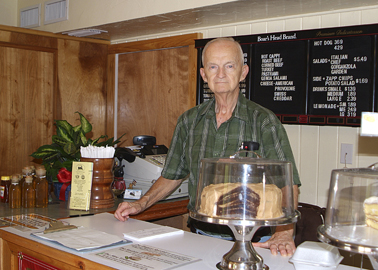
Over a year later and with summer around the corner, Poe Springs remains closed as renovations and repairs have taken longer than anyone anticipated.
HIGH SPRINGS – It’s a dirty job, but somebody has to be responsible for picking up the trash in Poe Springs and making sure the restrooms work.
Last year, the City of High Springs came to the county with the idea of taking over management of the park's daily operations, a job that mainly requires keeping the location clean and maintaining the facilities. In return, the city would keep the revenue earned by the springs to pay for the cost of management, as well as the hope of attracting more visitors to High Springs to spend money in local businesses. Negotiations fell through, but the county is still willing to look at the prospect, said Mark Sexton, spokesman for Alachua County.
"The option is still out there," he said.
Currently, several members of the city government have said there are no plans at the moment to resume talks, but once the city's financial issues are addressed, that could change.
"We're just in the process of getting our budget straight," said City Manager Ed Booth. It will probably take about two years before the city would be in a position to take over, he said. Booth said the first step would be an extensive reevaluation of the costs and benefits of running the park.
Funding was the final straw that killed the original negotiations, but there were other factors, Booth said.
A major obstacle was the fact that the county had to perform heavy renovations to the park, and the completion date kept getting pushed back, said High Springs Mayor Sue Weller. When the county had estimated the renovations would be done by late last year, the city lost interest because it didn't want to operate the park for several months before it became profitable in the summer, she said.
The overhaul still isn't finished, but the current completion date is set to be within three to four weeks, said Robert Avery, Alachua County director of Parks and Recreation.
The steps leading into the springs were breaking down, and the Florida Department of Environmental Protection told the county they had to remove beach sand from the area to prevent it from getting washed into the springs, Avery said. A retaining wall also needs to be replaced. The cost of the renovations was originally around $86,000 Avery said, but has swollen to nearly $147,000.
When the park opened in 1992, Alachua County contracted the day-to-day management to the YMCA. In 2009, the private company Nature Quest took it over, but that arrangement ended in late 2011. Since then, the county has managed Poe Springs.
City Commissioner Bob Barnas was the biggest proponent of the arrangement, said Damon Messina, who acted as the director of Parks and Recreation for High Springs at the time of the talks. Barnas was the one who originally took a takeover plan to the county, said Alachua County spokesman Sexton. The original plan assumed High Springs would more or less break even on the cost of running the park with the revenue it would have made, but might see more economic activity in local restaurants and businesses, said Mayor Weller. Barnas declined to comment. Weller wasn't convinced the city would even make enough money to break even, and doubted the idea that people visiting Poe Springs would come into town and spend money.
"No program that was presented shows how we would get people from Poe Springs to come into High Springs."
The idea of raising prices and expanding the number of days the park is open is one possible option.
"The admission rate would probably have to go up," said City Manager Booth.
If the city hypothetically made enough money running the springs that it was turning a large profit, the county would renegotiate the contract, said Alachua Parks and Recreation Director Avery. It is unlikely that will happen, though, he added.
"The park has always been self-sufficient," he said, but "they'd be doing pretty good to just break even."
Though Booth estimates it will be about two years before the city's budget could realistically be enough to consider taking over Poe Springs, the possibility of opening up a dialogue about the idea could start much sooner, said Mayor Weller.
The High Springs budget for next year will be presented in July, and plans to look into the viability of taking over the park could be presented then.
"I haven't heard anyone discussing it, but I suspect there is still an interest," Weller said. "If it just came to a vote just to see if in fact it would be feasible for the city to run Poe Springs, I think that would be something that would probably pass."
If High Springs decides not to pursue a management takeover, the county could keep running the springs itself, said county spokesman Sexton.
"We're prepared to operate the park as part of the county park system," he said. The county might also look to contract with another company like Nature Quest.
Because High Springs has an immediate interest in making sure Poe Springs does well, he said it makes sense for them to take the park over. Once the renovation work is done, Sexton said it is his understanding there will be a renewed conversation with the city.
"The county is certainly open to the idea," he said. "It rests in the hands of the High Springs commissioners."
# # #
Email CMcKinney@
alachuatoday.com
Add a comment

 Eagle Scout Seth Montgomery led a service project of constructing planter boxes at Mebane Middle School that will be used to grow fresh fruit and vegetables for student lunches.
Eagle Scout Seth Montgomery led a service project of constructing planter boxes at Mebane Middle School that will be used to grow fresh fruit and vegetables for student lunches.